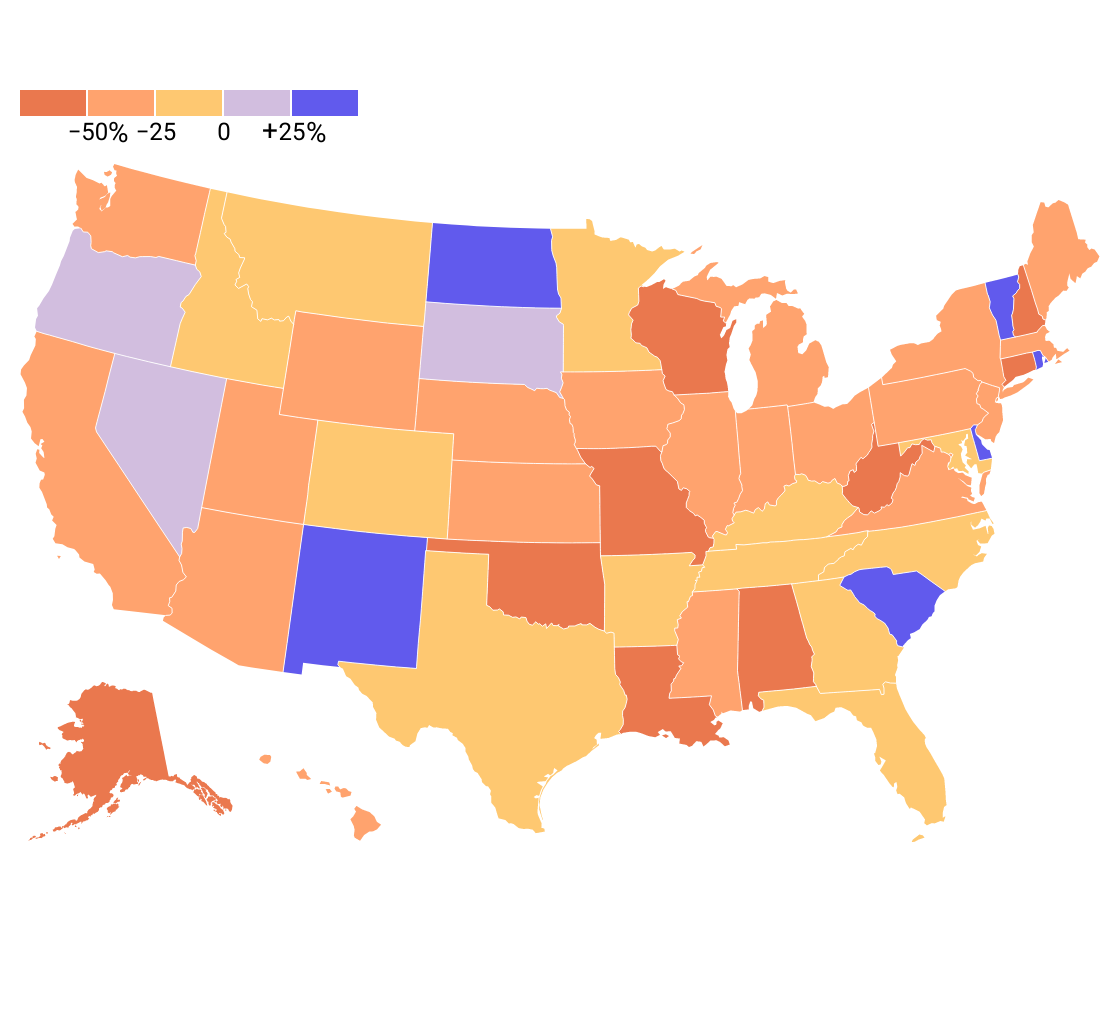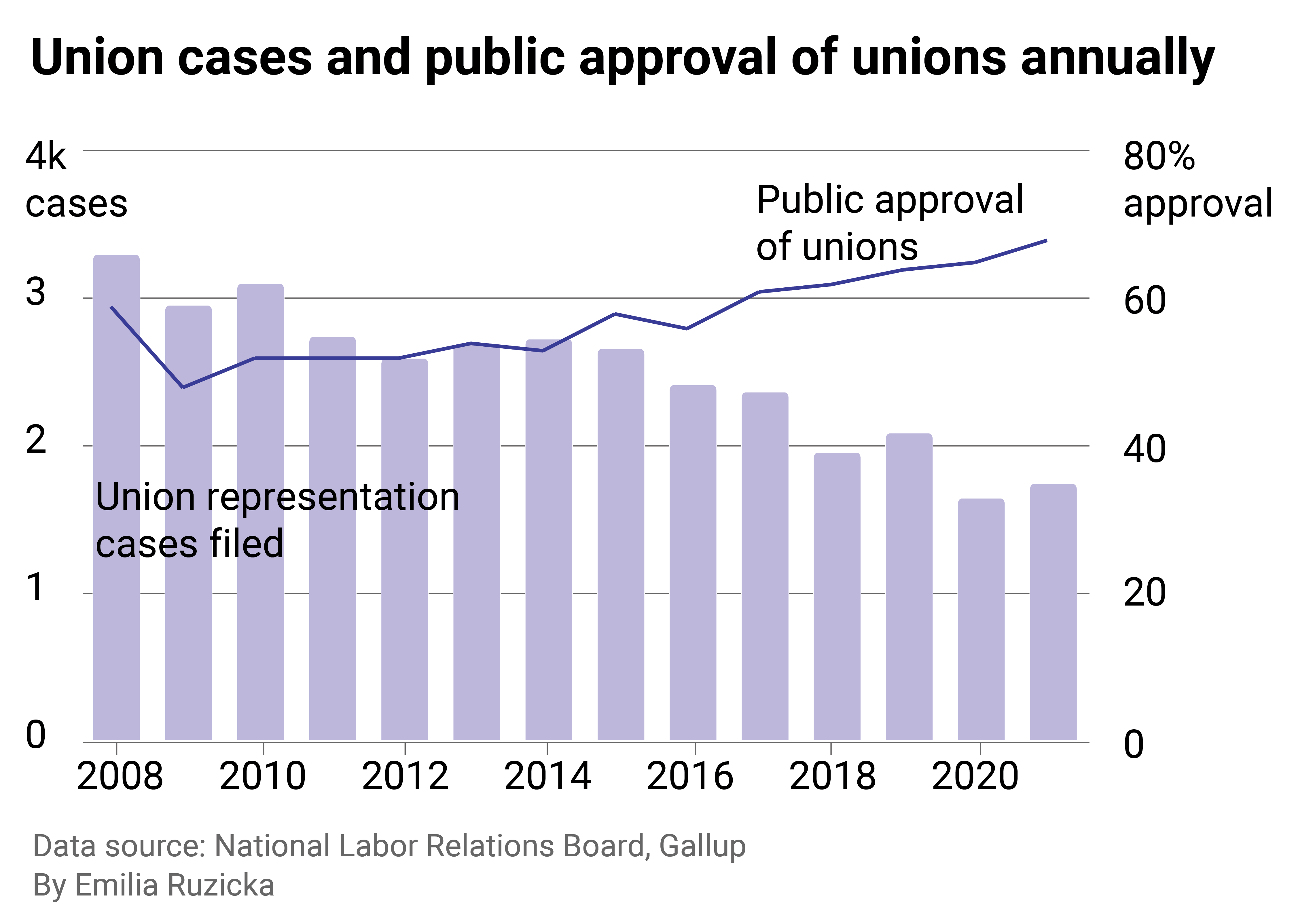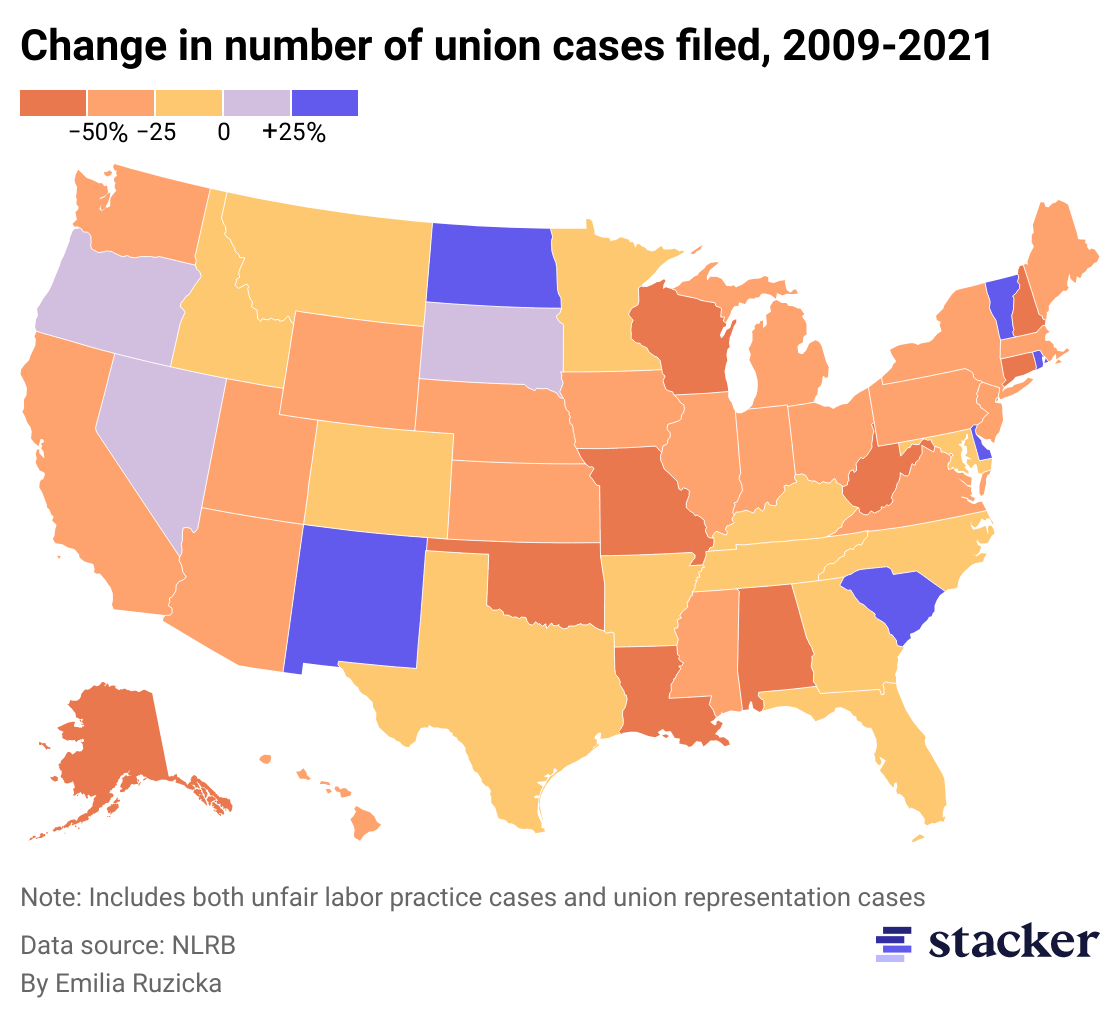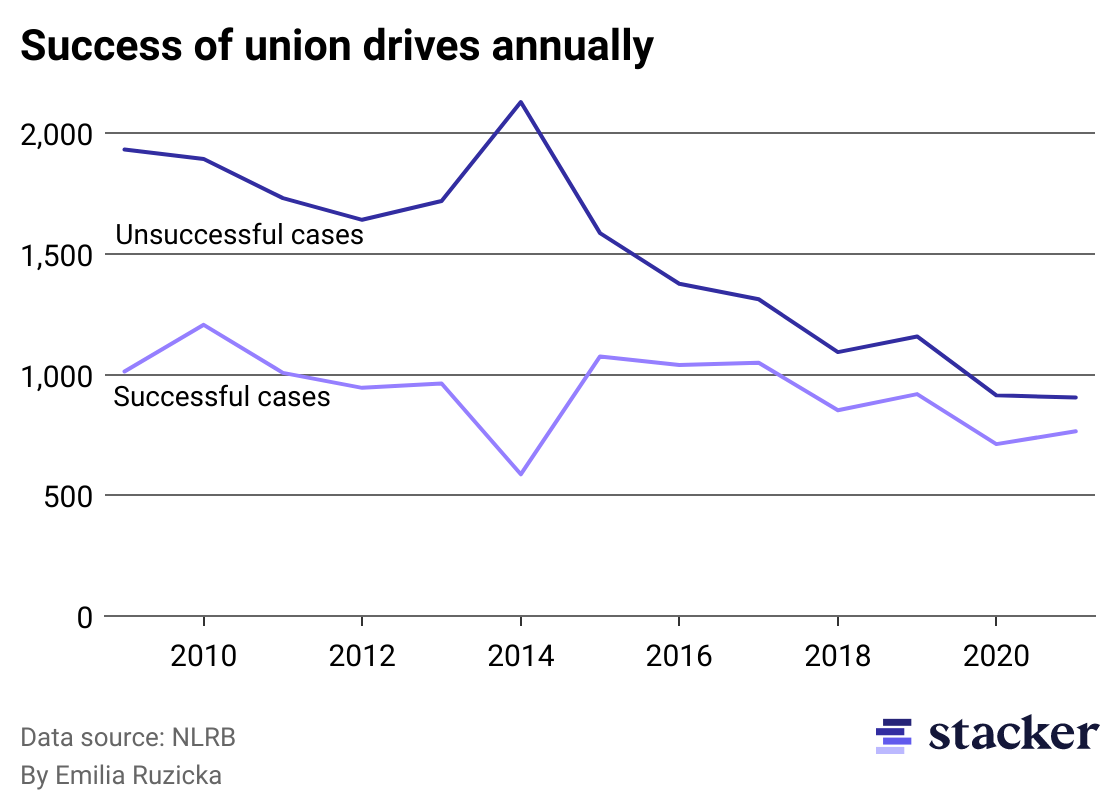
Union activity declined over the last decade even as public support reached a modern high
Union activity declined over the last decade even as public support reached a modern high
A growing portion of Americans has cheered on union efforts over the last decade, even while organized labor activity and membership have declined. But could growing positive sentiment coupled with a surge in labor organizing this past year signal the start of a labor revival of sorts?
Stacker analyzed data from the National Labor Relations Board and Gallup to investigate the relationship between union activity and union approval rates. The data collected spanned the years of 2008-2021 and gave insights into more than 300,000 unfair labor practice complaints and unionization requests.
There's been no shortage of headlines surrounding new unionizing efforts at major corporations in the last year. And filing data from the NLRB shows petitions by workers for union elections rose roughly 6% from 2020-2021, a signal that employees of more workplaces are interested in forming new unions or joining established ones. The board also received about 3% more complaints filed by employees in established unions and their employers than in previous years. Unfair Labor Practice complaints tend to be filed when workers allege an employer is violating labor law.
A combination of "unbridled corporate power" that's been building over the last 40 years—plus the support shown for workers in mostly low-wage positions who were hailed as "essential" and "frontline heroes" during the pandemic—galvanized workers to petition for unions in their workplaces, labor sociologist at CUNY School of Labor and Urban Studies Ruth Milkman told Stacker.
"When people heard the word 'union' they [previously] thought, 'Well this was something that made sense during the Great Depression," Milkman said. "Nobody thinks that today, and especially since 2008 when we saw companies get bailed out and ordinary people suffer."
The sympathy is evident in Gallup's tracking of Americans' approval of unions, which hit a roughly six-decade high this year: 71% of Americans said they approve of unions in 2022—a significant increase compared with the record low 48% approval rating among Americans recorded in 2009. Today, just 10% of workers belong to a union in both the private and public sectors. Typically, those workers see nearly 20% higher wages than their nonunion counterparts, according to 2021 Census Bureau data.
"Unions have been beaten up for 30-40 years now, so it's hard for them to get up and fight again after that," Milkman said. What's missing is legislation to shore up workers' rights, Milkman told Stacker. The CUNY School of Labor and Urban Studies recently published a report that found "the new organizing of the past year has not been of sufficient scale to make a difference in the overall picture."
Legislation has been proposed in recent years, including the Protecting the Right to Organize Act, which proponents argue would be a step toward leveling the playing field with employers. The PRO Act would create real penalties for employers who violate workers' rights under the National Labor Relations Act, make it unlawful to replace striking workers permanently, and bring union election procedures up to modern standards, among a multitude of other amendments to the NLRA.
The largest business lobbying groups and Republican politicians have opposed legislation that would bolster the strength of organized labor, and the subject is a highly partisan one today, with 90% of Democrats supportive of unions compared with just 47% of Republicans, according to Gallup.

Union drives are decreasing while approval skyrockets
Petitions for union elections at U.S. workplaces fell by nearly 53% from their peak during the Great Recession. However, union activity so far in 2022 suggests the uptick in 2021 could become a trend. The NLRB, whose fiscal year begins and ends in October like other federal agencies, found that it took only eight months this fiscal year for union election petitions filed with the agency to eclipse 2021 levels.
"The NLRB is processing the most cases it has seen in years with the lowest staffing levels in the past six decades," NLRB general counsel Jennifer Abruzzo said in a statement this summer.
And while public sentiment about essential workers may have helped spur a spike in organizing to begin the 2020s, sentiment about unions has thus far proven detached from union organizing activity in recent history and might not foretell an increase in organizing.
Nearly 1 in 3 workers by the mid-19th century was represented by a trade union. But a significant decline in union membership by the turn of the century prompted one Harvard economist to write that "if they were an animal or plant, private sector unions would fall on the endangered species list of the U.S. Fish and Wildlife Service."

Just 9 states have seen an increase in union drives and unfair labor practice complaints since 2009
Workers in Nevada, South Carolina, New Mexico, Rhode Island, Oregon, Delaware, North Dakota, and Vermont saw a slight uptick in organized labor activity as evidenced by the volume of petitions for representation and complaints filed in each state since 2009.

The percent of successful union drives is steadily climbing
The portion of elections for which workers filed petitions and which ultimately resulted in a union being successfully formed rose slightly between 2009-2021. A union drive typically begins with workers talking amongst themselves about working conditions and gathering support before petitioning the NLRB for an election. A simple majority of "yes" votes among eligible workers results in the NLRB granting union certification.
But workers face an uphill battle as companies pour capital into beating back employees' attempts to unionize and collectively bargain for their first contracts—sometimes in ways the NLRB has found to be a violation of labor law.
An NLRB judge found Starbucks illegally fired one of its employees in Michigan for engaging in union activism—an act protected for workers under the NLRA. The agency has also found video game publisher Activision Blizzard withheld raises from workers as retaliation against union activity. Unionizing Amazon workers in New York's Staten Island were suspended by the retail giant for collectively walking off of a worksite after a fire during work hours.



